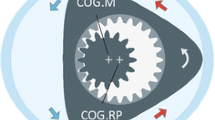This article describes the design and testing procedures for an innovative implantable pump for medical applications. In contrast to traditional drug delivery methods, this implantable pump delivers drugs or biofluids (blood, plasma, etc.) with better performance. The valve-less feature of the pump reduces the probability of damaged blood cells during pumping, which may be caused by shearing forces on the cell membrane. High accuracy of drug (or biofluid) administration in an implantable pump is beneficial when treating patients. In addition, the pump does not require an external power source since it relies entirely on the body’s own energy from the pulsating character of blood circulation. The theoretical model of the pump elements is built based on nozzle-diffuser elements. The experiment shows that the efficiency ratio decreases when there is an increase in diameter of the nozzle-diffuser element. The efficiency ratio is also affected by the angle and the length of the channel. The maximum flow rate for the designed pump is around 1 ml/min based on a frequency of 1.16 Hz in pulsatile flow regime. The total dimensions (nozzle-diffuser elements and pumping chambers) of our pump are 45 × 6 × 15 mm. However, it is important to note that the dimensions can vary (from micro to macro sizes) depending on the application.
Similar content being viewed by others
References
F. M. White, Fluid Mechanics, Mc Grow Hill (1998).
E. Stemme and G. Stemme, Sens. Actuators A: Phys., 39, 159–167 (1993).
T. Gerlach, M. Schuenemann, and H. Wurmus, J. Micromech. Microeng., 5, 199–201 (1995).
F. K. Forster, R. L. Bardell, M. A. Afromowitz, N. R. Sharma, and A. Blanchard, Proc. ASME Fluids Engineering Division, FED 234 (1995), pp. 39–44.
M. Heschel, M. Müllenborn, and S. Bouwstra, J. Microelectromech. Syst., 6, No. 1 (1997), pp. 41–47.
A. Olsson, P. Enoksson, G. Stemme, and E. Stemme, J. Microelectromech. Syst., 6, 161–166 (1997).
H. Andersson, W.v.d. Wijingaat, P. Nilsson, P. Enoksson, and G. Stemme, Sens. Actuat. B, 72, 259–265 (2001).
V. Singhal, J. Y. Murthy, and S. V. Garimella, Sens. Actuat. A, 113, 226–235 (2004).
J. W. Judy, In: Conf. Measur. Sci. Tech., Anaheim, CA (2000).
N. Maluf, D. A. Gee, K. E. Petersen, and T. A. Gregory, Kovacs Medical Applications of MEM (2000).
J. G. Smits, Sens. Actuat., A21–A23 (1990).
Q. Cui, C. Liu, and X. F. Zha, J. Intell. Mat. Syst. Struct., 19 (2008).
C. Yamahata, F. Lacharme, and M. A. M. Gijs, Microel. Eng., No. 5, 132–137 (2005).
R. Zengerle, J. Ulrich, S. Kluge, M. Richter, and A. Richter, Sens. Actuat. A, 50, 81–86 (1995).
O. C. Jeong and S. S. Yang, Sens. Actuat. A, 83, 249–255 (2000).
J. Kan, Z. Yang, T. Peng, G. Cheng, and B. Wu, Sens. Actuat. A, 121, 156–161 (2005).
Ali Ostadfar and A. H. Rawicz, J. Med. Biol. Eng., in press (2012).
Sangki Lee and Kwang J. Kim, Smart Mat. Struct., 15, 1103–1109 (2006).
X. N. Jiang, Z. Y. Zhou, X. Y. Huang, Y. Li, and Y. Yang, Sens. Actuat. A, 70, 81–87 (1998).
E. Ventsel and T. Krauthammer, Thin Plates and Shells Theory, Analysis, and Applications, Marcel Dekker (2001).
D. J. Laser and J. G. Santiago, J. Micromech. Microeng., 14, R35–R64 (2004).
V. K. Varadan, K. J. Vinoy, and S. Gopalakrishnan, Smart Material Systems and MEMS: Design and Development Methodologies, John Wiley and Sons (2006).
Nguyen Nam-Trung and S. T. Wereley, Fundamentals and Applications of Microfluidics, Artech House (2006).
I. J. Karassik, J. P. Messina, P. Cooper, and C. C. Heald, Pump Handbook, McGraw-Hill (2001).
Operator’s Manual. COBE Century Perfusion Pump, COBE Cardiovascular, Inc.
Edwards TruWave Disposable Pressure Transducer. Edwards Life Science.
P. K. Bansal and G. Xie, J. Heat Mass Transfer, 25, 183–190 (1998).
Author information
Authors and Affiliations
Corresponding author
Additional information
Translated from Meditsinskaya Tekhnika, Vol. 47, No. 1, Jan.-Feb., 2013, pp. 42-46.
Rights and permissions
About this article
Cite this article
Ostadfar, A., Rawicz, A.H. Characterization of an Innovative Implantable Valve-less Pump for Bio or Drug Fluid Delivery − Theory and Experiment. Biomed Eng 47, 50–55 (2013). https://doi.org/10.1007/s10527-013-9333-x
Received:
Published:
Issue Date:
DOI: https://doi.org/10.1007/s10527-013-9333-x




